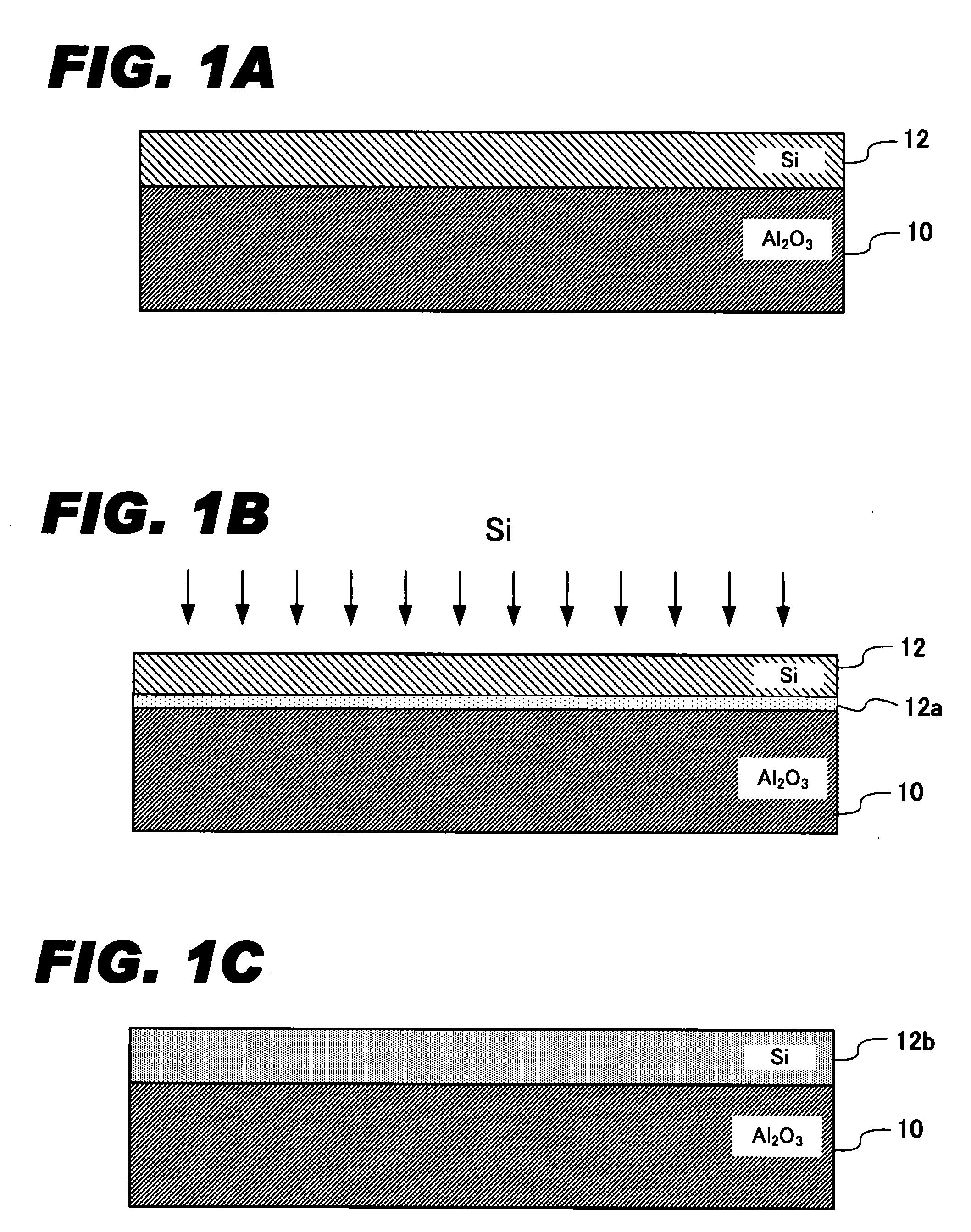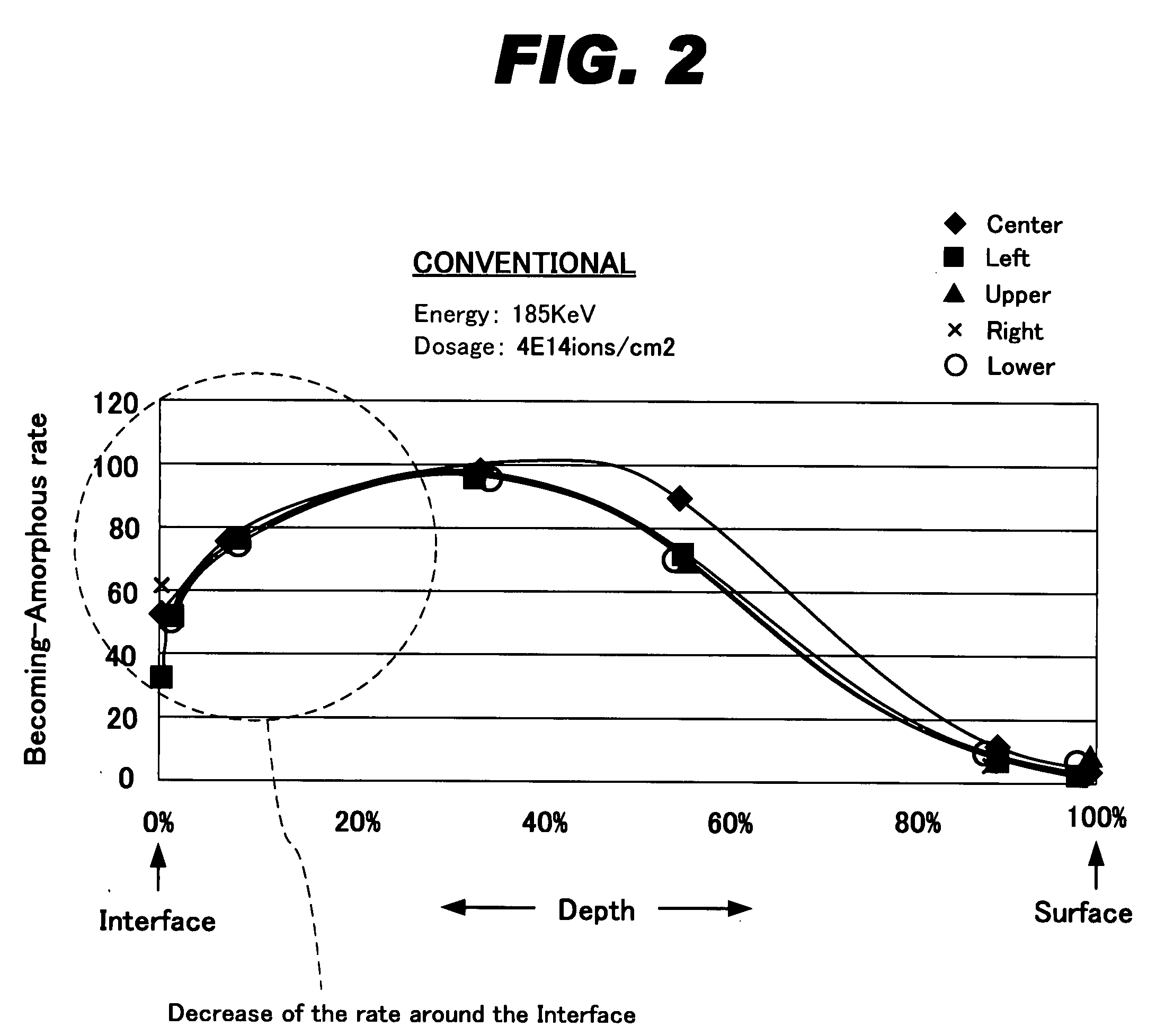Method for fabricating semiconductor
- Summary
- Abstract
- Description
- Claims
- Application Information
AI Technical Summary
Benefits of technology
Problems solved by technology
Method used
Image
Examples
first embodiment
[0039]FIGS. 1A to 1C are cross-sectional views of an SOS wafer schematically showing a part of fabrication steps of the SOS wafer according to the present invention.
[0040]As shown in FIG. 1A, a silicon layer 12 having a thickness of approx. 2800 Å on a sapphire substrate. Next as shown in FIG. 1B, silicon ions are implanted into the silicon layer 12 to induce an amorphous region 12a to be formed in the proximity of the interface with the sapphire substrate 10. Then as shown in FIG. 1C, the silicon layer is epitaxially regrown (12b). The present invention applies to the process shown in FIG. 1B and provides optimized conditions for silicon ion implantation so as to suppress defects in the epitaxially grown silicon layer 12b.
[0041]The first embodiment of the present invention provides an optimized dosage (density: the number of ions per unit area) for Si implantation into the silicon layer 12. In practice in this embodiment, the conditions of a dosage of 8E14 / cm2 (±10%) and implantat...
second embodiment
[0049]The second embodiment of the present invention provides optimized implantation energy for Si implantation into the silicon layer 12. In practice in this embodiment, the conditions of a dosage of 6E14 / cm2 (±10%) and implantation energy of 160 KeV to 140 Kev are employed for silicon ion implantation, instead of the conventional conditions of a dosage of 6E14 / cm2 and implantation energy of 185 Kev.
[0050]FIGS. 9 to 13 show the becoming-amorphous rate, that is, data of becoming-amorphous profile dependent upon implantation energy, of a silicon layer 12 (12b), wherein ion implantation into the silicon layer was executed under various conditions. The examples shown in FIGS. 9 and 10 employed implantation energy of 185 KeV and 170 KeV, respectively, for the conditions pertinent to comparative examples (conventional examples). The example shown in FIGS. 11, 12 and 13, to the contrary, employed implantation energy of 160 KeV, 150 KeV and 140 KeV for the condition pertinent to the presen...
PUM
 Login to view more
Login to view more Abstract
Description
Claims
Application Information
 Login to view more
Login to view more - R&D Engineer
- R&D Manager
- IP Professional
- Industry Leading Data Capabilities
- Powerful AI technology
- Patent DNA Extraction
Browse by: Latest US Patents, China's latest patents, Technical Efficacy Thesaurus, Application Domain, Technology Topic.
© 2024 PatSnap. All rights reserved.Legal|Privacy policy|Modern Slavery Act Transparency Statement|Sitemap



